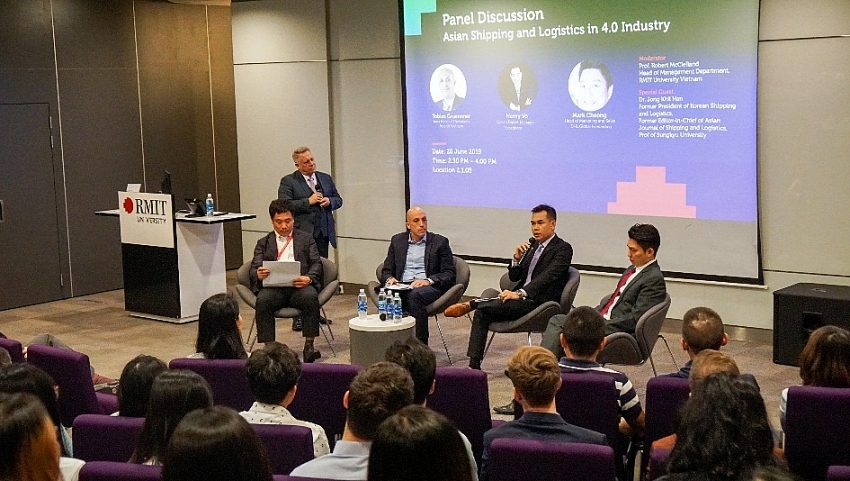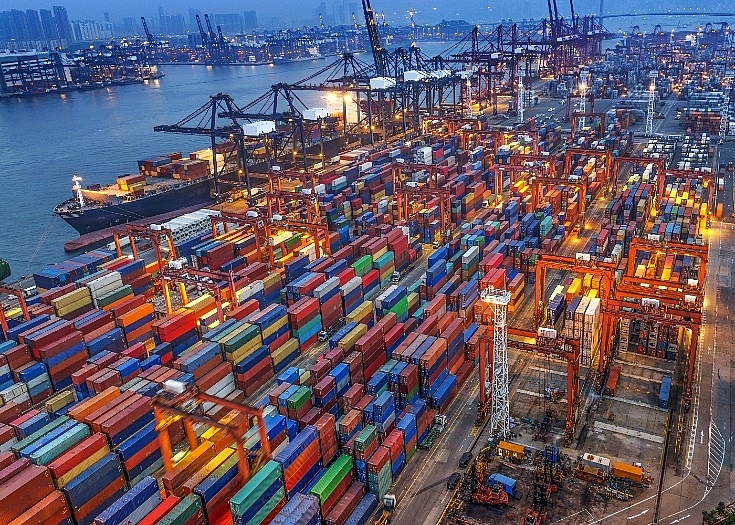Logistics prove key to sustaining Vietnam’s appeal
 |
When logistics lags behind
It is no secret that Vietnam is now hailed left and right as the world’s next magnet for investment and manufacturing. However, according to experts, these advantages can be lost if Vietnam does not improve its logistics system, which remains a headache for investors and businesses alike.
Specifically, a World Bank report shows that Vietnam’s logistics costs account for 20.9 per cent of its GDP, compared to China's 19 per cent, Thailand's 18 per cent, and the European Union's only 10 per cent. High logistics costs are likely to undermine Vietnam’s attractiveness as an investment destination, especially as the world moves towards Industry 4.0 and sustainability initiatives.
At last week’s International Conference of Asian Shipping and Logistics (ICASL 2019) in Ho Chi Minh City, regional experts have discussed this issue at length. The event was jointly organised by RMIT University Vietnam, the Korean Association of Shipping and Logistics Asssociation and Incheon National University, with funding from Korea’s Ministry of Oceans and Fisheries, and Yeosu Gwangyang Port Authority.
At the panel discussion within the ICASL 2019, according to Professor Jong Khil Han, former president of the Korean Shipping and Logistics Association, Vietnam’s logistics facilities are struggling to keep up with the sudden surge in demand.
“Vietnam needs to make long-term forecasts and development plans for infrastructure until 2035, especially as the country becomes a manufacturing powerhouse and benefits from regional trade diversions,” said Jong. The professor pointed out that sustainability is another trend to keep an eye on, as the International Maritime Organisation (IMO) launches the Energy Efficiency Index and strives to cap the sulfur content in marine fuels at 0.5 per cent in 2020.
In a similar tone, Tobias Gruemmer, area head of operation at Maersk Vietnam, repeated that as infrastructure development takes many years, Vietnam must start now to prepare for future trade growth. Gruemmer believed that it is crucial to expand airports and focus on the three main seaport clusters, making it easier for investors and businesses to transfer their goods around Vietnam.
Other suggestions include connecting logistics facilities together, as Vietnam’s warehouses, seaports, and airports remain fragmented. Henry Vo, ocean export manager at Expeditor, pointed out that Cai Mep Seaport in Vung Tau province is running at only 70 per cent of its capacity, while the more established Cat Lai Port in Binh Duong province is frequently congested.
“Connectivity is an issue [for Vietnam’s logistics industry]. For example, shippers don’t go to Cai Mep because it’s far away from industrial parks and there’s only one road,” said Henry. The expert also acknowledged that Vietnam’s logistics facilities are not growing fast enough to accommodate trade inflows.
 |
Towards a digital future
According to experts at the panel discussion held in the framework of the ICASL 2019, Vietnam is also facing challenges in the digital aspect of logistics, as Industry 4.0 technologies such as the Internet of Things, big data, and augmented reality are turning the industry upside down. These digital innovations promise to slash shipping costs, improve the visibility of ships, and ensure the security of cross-border cargo.
In the very near future, the entire supply chain in Vietnam is expected to be digitised, from booking to documentation – especially with the rising popularity of blockchain, a cutting-edge system of distributed ledgers that allows information to be passed securely. In late 2018, officials at Vietnam’s General Department of Customs noted that blockchain might be piloted in Vietnam within the next three or five years.
Mark Cheong, head of Marketing and Sales at DHL Global Forwarding, said that Industry 4.0 technologies are changing customer behaviour, forcing logistics providers everywhere to adapt to around-the-clock services. For example, many buyers in Vietnam now shop online and expect goods to arrive at their door within a few days.
“Digitising is affecting all parts of the supply chain. Customers want quicker service, and the question is whether logistics providers can meet that demand,” said Cheong. He added that DHL is working closely with the Vietnam Logistics Association to explore solutions, including digital ones, that can help bring down logistics costs.
Meanwhile, Tobias Gruemmer from Maersk believed that blockchain can drive up global trade by 15 per cent as it becomes easier and safer to transfer goods or massive amounts of data across borders. This is an “unparalleled growth” that Gruemmer expects to reflect positively on Vietnam, whose economy is expected to go up in double digits every year following the free trade deals.
Most experts at the panel discussion agreed that Industry 4.0 will allow Vietnam’s logistics industry to leap-frog into the future, especially with the growth of local startups that use technology to transform the shipping and warehousing segment. Logistics firms might want to work with these newcomers for win-win partnerships, said the experts.
“In logistics, information is king. Technology will allow us to provide information to customers in an effective manner and help them with their decision-making. Again, Vietnam’s logistics infrastructure might be sufficient for now, but for long-term growth, we need more muscle to push the ideas ahead and reduce red tape,” said Mark Cheong from DHL.
What the stars mean:
★ Poor ★ ★ Promising ★★★ Good ★★★★ Very good ★★★★★ Exceptional
Related Contents
Latest News
More News
- Long-term capital seen as key hurdle to green growth (December 16, 2025 | 08:00)
- HDS Summit spotlights Vietnam’s rising role in regional supply chains (December 16, 2025 | 08:00)
- Agribank frames bank credit as catalyst for green growth (December 15, 2025 | 17:59)
- Legal framework completed for national digital transformation (December 13, 2025 | 21:55)
- SOAR initiative launched at TECHFEST Vietnam 2025 (December 13, 2025 | 10:00)
- Promoting digital assets initiative in Vietnam (December 13, 2025 | 09:30)
- Legislation gives government flexibility for loan guarantees (December 11, 2025 | 18:04)
- Vietnam masters core technologies of automobile value chain (December 11, 2025 | 17:46)
- Japanese investors pursue M&A strategies with long-term vision in Vietnam (December 11, 2025 | 12:14)
- Raising product quality to secure Vietnam’s position in US market (December 11, 2025 | 12:00)

 Tag:
Tag:




























 Mobile Version
Mobile Version